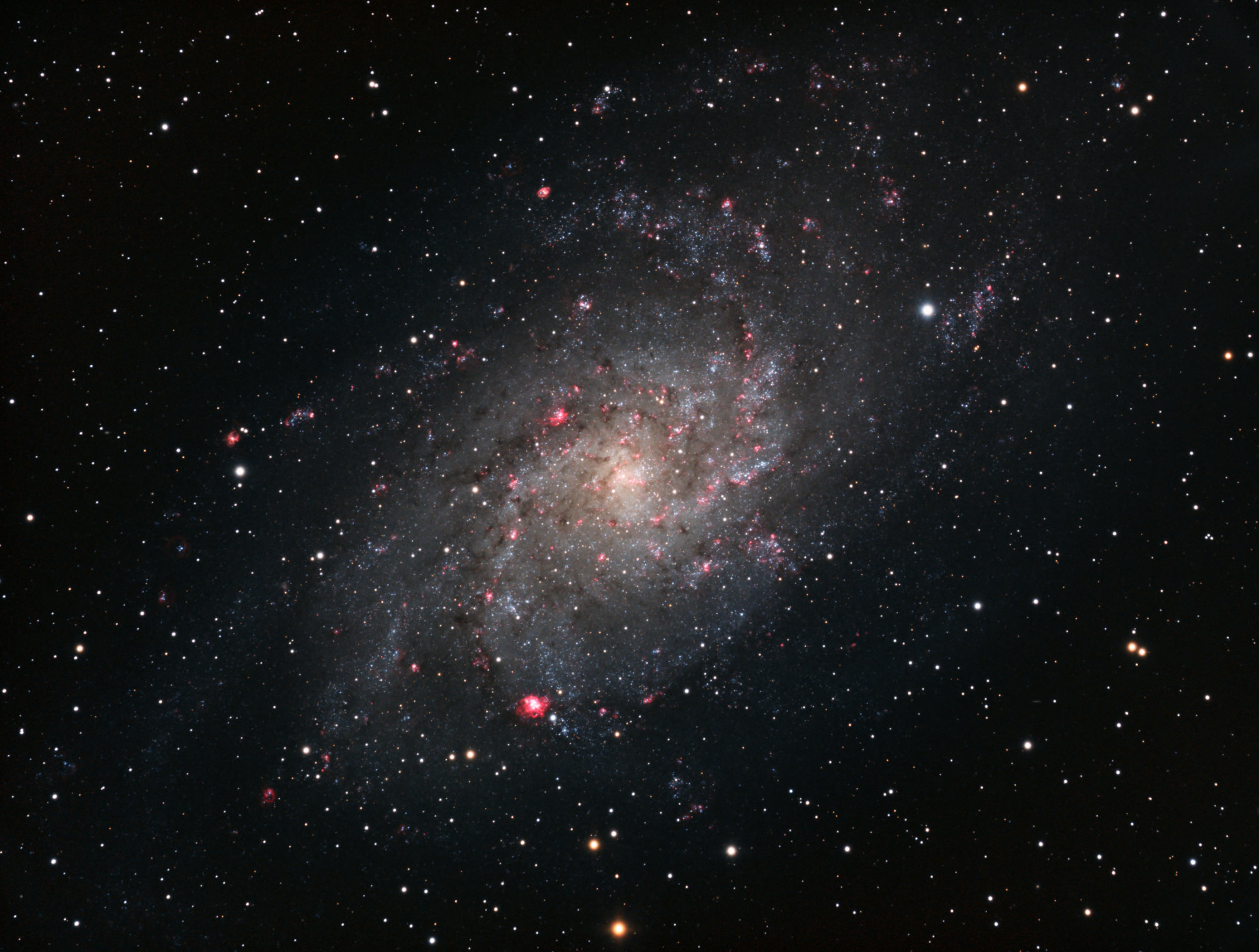
Images
Caldwell 7
A beautiful spiral galaxy, also known as ‘little M33’. Photographed in sessions two years apart, but all combined into one LRGB image, enhanced with H-alpha data indicating areas of active star formation within the galaxy.
Moon
On the very first night testing out the new Mewlon-180c, some short videos were shot of the Moon. After processing the video-files using the new software PlanetarySystemStacker, this moon image came out. Certainly a motivation to do a lot more moon photography and test the Mewlon on some of the planets.
Caldwell 4
An image of NGC7023, captured on three different occasions, two(!) years apart. The bright blue reflection nebula is referred to as Iris Nebula, named after the similarly blue flower. With more than 17h of exposure also the darker nebulae are visible.
C/2021-A1 Comet Leonard
Bright comets are seldom appearances in our solar system. Comet Leonard was one of the most striking examples this year. Just days before it would become at its brightest and before it would cross the ecliptic, this image was shot in the early morning hours.
Caldwell 34
The Veil Nebula in HOO was chosen as the first object to photograph using the new RST-135E mount. This ultra-portable mount is super-easy to setup and can be used without counterweights or balancing. First light and lessons learned on a beautiful target.
Sh2-129 - Flying Bat and Squid Nebula
Recently (2011) the Flying Squid Nebula has been discovered right within the Flying Bat Nebula (Sh2-129). The very weak OIII object is hard to image and with almost 30h of total exposure this has been one of the most challenging objects so far.
Perseïd Meteors
One of the most well-known meteor showers, the Perseïds is visible around August 11-13 every year. This year, in a first attempt to photographing meteors, to photography setups were used to create a composite image of some of the meteors on August 11.
Sh2-229 | C31
IC405 is an interesting combination of both a reflection and emission nebula that emits strongly in H-alpha. The double-star AE Aurigae shines brightly in the middle and illuminates vast clouds of hydrogen gas.
Markarian’s Chain
In the middle of a crowded area of galaxies, known as the Virgo Cluster, one can find a string of Galaxies, commonly known as Markarian’s Chain. Eight galaxies, including the rather bright elliptical galaxies M84 and M86 make up this remarkable object.
M35
A nice combination of two star clusters. M35, an open cluster in the constellation Gemini. Only a few hundred stars. The second cluster is NGC2158. It is much further away and therefore looks much smaller. Its old red stars make a nice contrast with the bright blue stars of M35, creating depth.




















